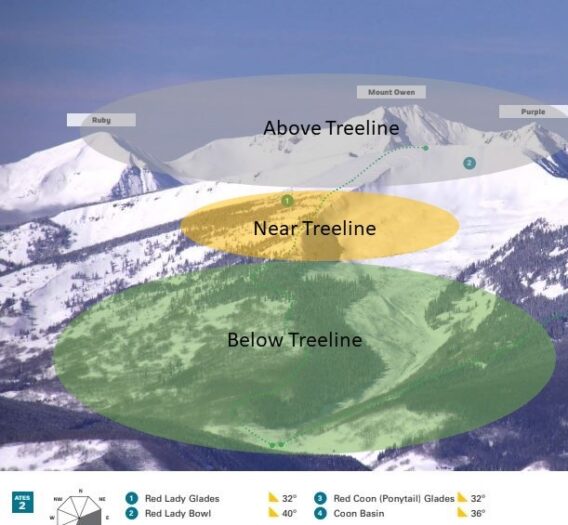Above Treeline: Above treeline describes the elevation band where trees aren’t capable of growing due to high altitudes. This alpine terrain is characterized by more wind, higher snowfall, and rockier terrain lacking vegetative anchors. The snowpack is often more variable above treeline because winds play a significant role in redistributing snow.
Near Treeline: Near treeline is the transitional elevation band near which tree growth dissipates due to altitude. Near treeline, or sub-alpine terrain, is characterized by krummholz or sparse glades and snowpack characteristics that transition between heavily wind affected and snowfall favored above treeline and more sheltered below treeline terrain. The specific elevation of treeline changes with aspect and location. Treeline is typically 11,000 – 11,800 feet around Crested Butte, and near treeline encompasses a few hundred vertical feet above and below that range.
Below Treeline: Below treeline describes the elevation band in which consistent forest cover is found, or in some cases, open sagebrush near the valley bottom. Below treeline elevations generally receive less snowfall and wind. On a slope scale, the snowpack below treeline tends to be more spatially homogeneous due to less wind effects.





